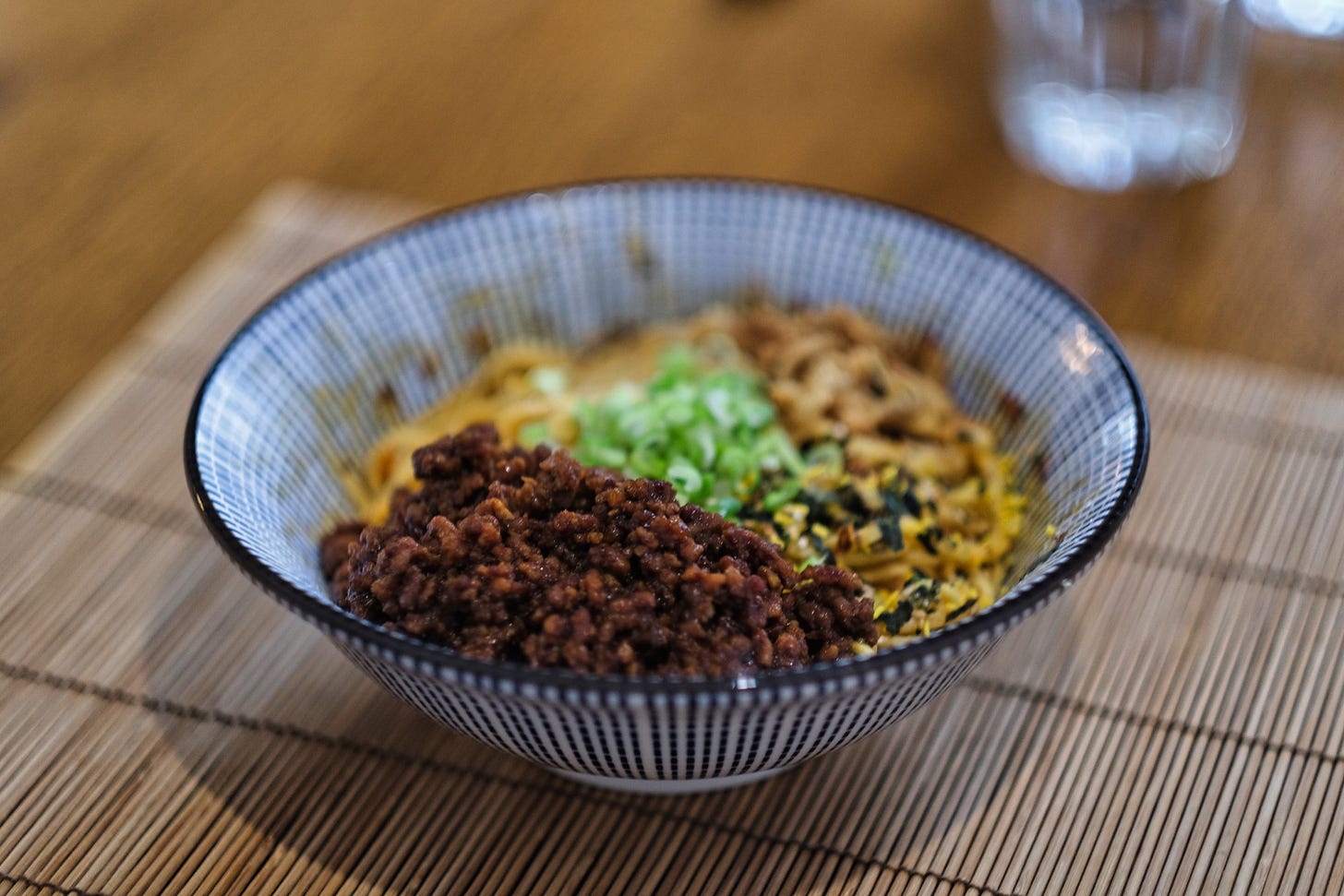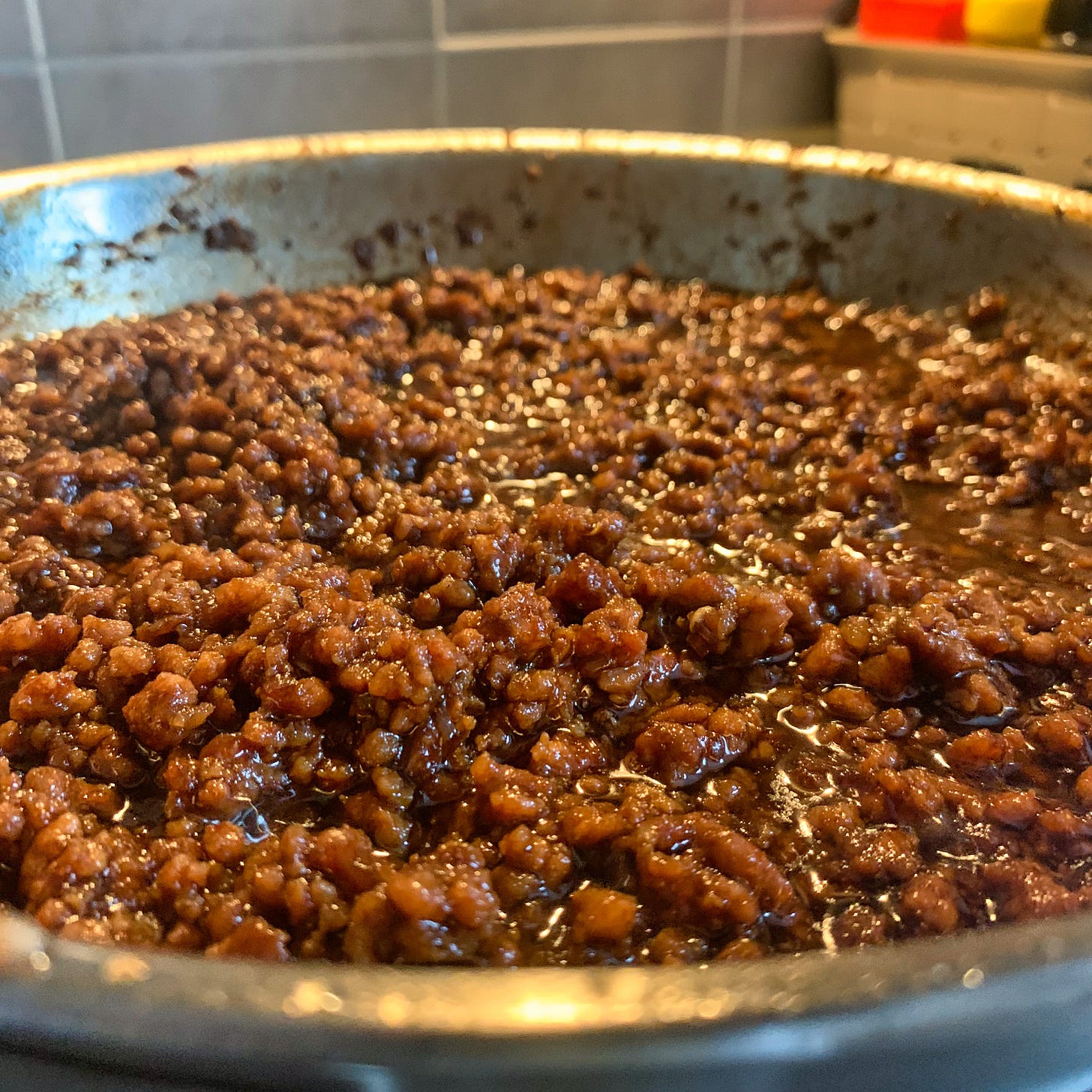Pork Soboro: The Japanese Ragù
How can I arguably merge Italian roots with Japanese cuisine? A glossy, sweet, and savory, hyper umami, braised ground pork dish.
The Japanese “Ragù”
Ah well, “Italians do it better” right?
What a lot of people outside of Italy know as “Bolognese Sauce” actually has a real name: Ragù (alla Bolognese) that, in turn, historically takes its name from the French Ragout, brought in northern Italy, specifically Emilia Romagna, following Napoleon’s invasion of that area.
Originally made with ground pork and beef with tomato, olive oil, and mirepoix, Bolognese Ragù is usually served on Tagliatelle, a typical egg pasta, a wider and thinner version of fettuccine.
On the other side of the globe, the Japanese term Soboro refers to ground meat, often chicken and pork (but even fish, or eggs), cooked into fine, crumbled pieces with classic seasonings from Japan, such as soy sauce, mirin, and sake.
And here it is.
Pork Soboro. A quick braised ground pork dish, glossy, sweet, and savory, hyper umami, gluttonously served on top of rice (Donburi) or noodles.
Yes, serve it on top of noodles.
Now you see the analogy.
This is the Japanese Ragù.
Recipe
Here’s a little suggestion.
We don’t like throwing away any food, not even marinade juices.
To be fair, for this recipe, there’s no real strict rule over the exact quantities, so they can be adjusted forward to your needs.
The full recipe is here just to provide a basic template on how to approach Pork Soboro from scratch.
For this reason, when cooking in batches, ideally, you can re-use the marinade from other previous preparations, such as the Ajitama eggs marinade or the juices from my Mandarin Chashu roast, adjusting quantities as needed.
If you added plenty of water to the previous marinades, for example, you can pre-boil it for 10-15 minutes or so to reduce the water content.
Ingredients
15 mL (1 tbsp) vegetable oil (I use roasted sesame seeds oil for taste)
0.5 kg ground pork
Half white onion, diced finely
2 cloves garlic, minced
2 “coins” of fresh ginger, minced
30 mL (2 tbsp) soy sauce
15 mL (1 tbsp) mirin
15 mL (1 tbsp) sake
15 mL (1 tbsp) water
30-45 mL (2-3 tbsp) of sweet bean paste
Salt and MSG to taste
Preparation
In a large pan, add the oil and sweat the onion over medium heat until they look translucent, around 3-5 minutes.
Add in the minced garlic and ginger, cooking until fragrant, around 1 minute.
Increase the heat to high, and add in the pork. Cook, stirring and breaking up clumps, until starting to brown.
Add the remaining ingredients (soy sauce, mirin, sake, sweet bean paste, salt, and MSG). Cook until the pork becomes glossy, fully cooked, and flavorful.
Adjust seasonings as necessary.
Serving
Pork Soboro can be mainly served on rice, in a dish that is called Donburi, and on noodles.
I have seen serving ground pork both on soup-less noodle dishes and on Ramen, in either mild or spicy versions. This preparation is essentially so convenient and versatile that you can easily incorporate it in a vast variety of dishes, or, if you feel crazy, even eat it as it is!
Feeling spicy?
Optionally, you can add other seasonings to taste during the final part of the cooking or while browning the meat.
I think, for example, Shichimi Togarashi, grated Sichuan pepper, white pepper, and bay leaves are all great enhancing additions.
For adding depth of flavor, try using some aromatized oil like this Five Spices Aroma Oil.
Notes & Storage
When not using, cool down your Pork Soboro and store it in an airtight container in the fridge for up to 3-5 days.
Need it for longer? You can freeze Pork Soboro! The longer it goes, the less fragrant it will be, but you can keep it frozen for up to 1 month for sure.
When using, re-heat the pork in a saucepan for a few minutes until it starts bubbling. If it feels too thick, add a touch of water and sesame oil to bring it back to life.
— The Ramen Bowl - ◡ -
If you’re not yet a subscriber and like The Ramen Bowl, leave your email to start receiving all the new posts directly in your inbox! 👇







Thanks for the like on the weight loss plateau checklist! Huge fan of Japanese cuisine and will be trying out this recipe. :)
India has a dish like this too, Kheema Pav. In India it’s made with goat mince though in NZ I make the same thing with lamb or beef mince. I’m curious if you dry the ground pork until all the juices evaporate?
That’s normally my biggest issue with lamb mince.